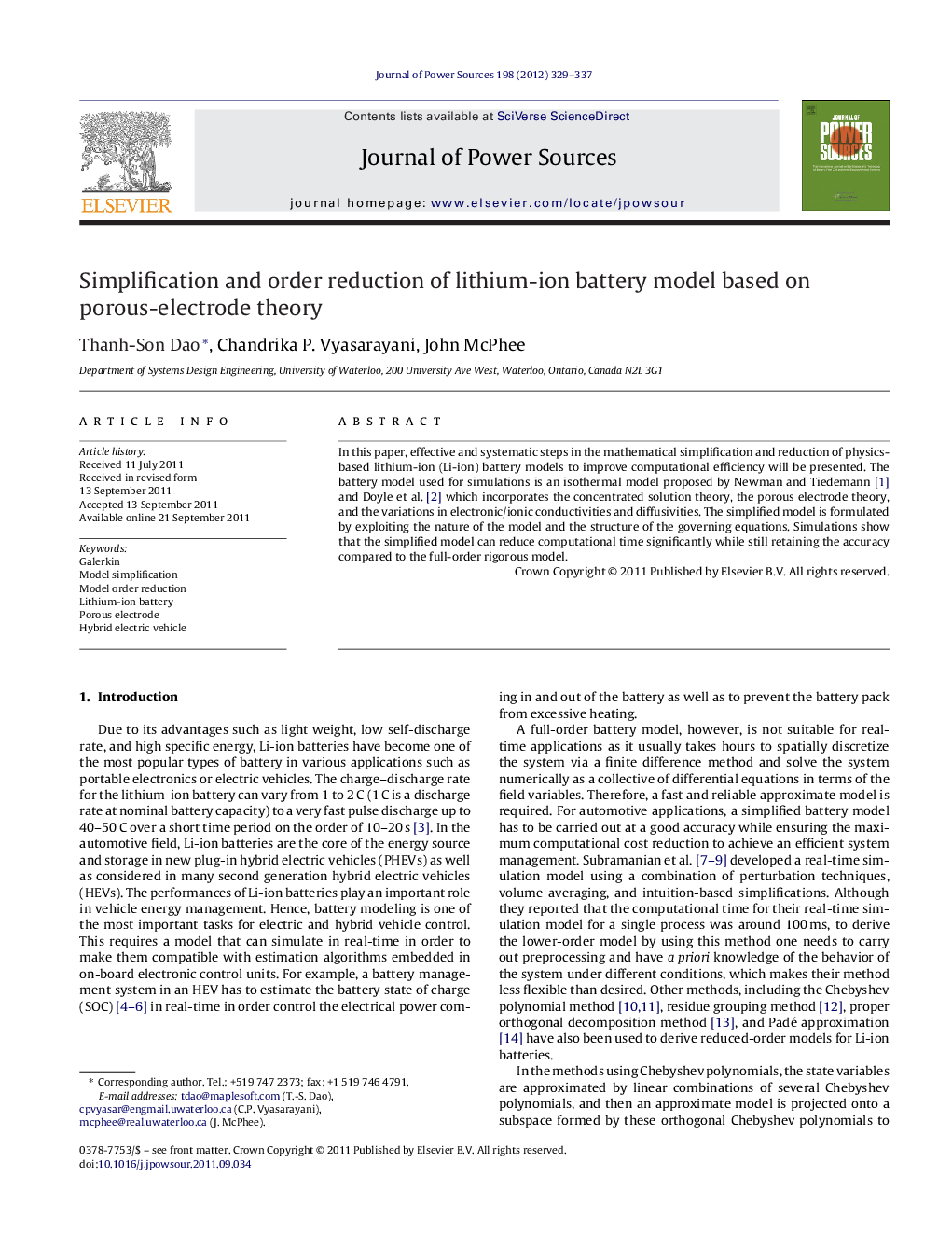| Article ID | Journal | Published Year | Pages | File Type |
|---|---|---|---|---|
| 1288431 | Journal of Power Sources | 2012 | 9 Pages |
In this paper, effective and systematic steps in the mathematical simplification and reduction of physics-based lithium-ion (Li-ion) battery models to improve computational efficiency will be presented. The battery model used for simulations is an isothermal model proposed by Newman and Tiedemann [1] and Doyle et al. [2] which incorporates the concentrated solution theory, the porous electrode theory, and the variations in electronic/ionic conductivities and diffusivities. The simplified model is formulated by exploiting the nature of the model and the structure of the governing equations. Simulations show that the simplified model can reduce computational time significantly while still retaining the accuracy compared to the full-order rigorous model.
► Simplification of physics-based Li-ion battery models. ► Galerkin's method has been used to convert partial differential equations to ordinary differential equations. ► A simplified set of equations is obtained, resulting in a reduction in simulation time with little loss of accuracy. ► Resulting model is suitable for real-time simulation of electric and hybrid electric vehicle systems.
